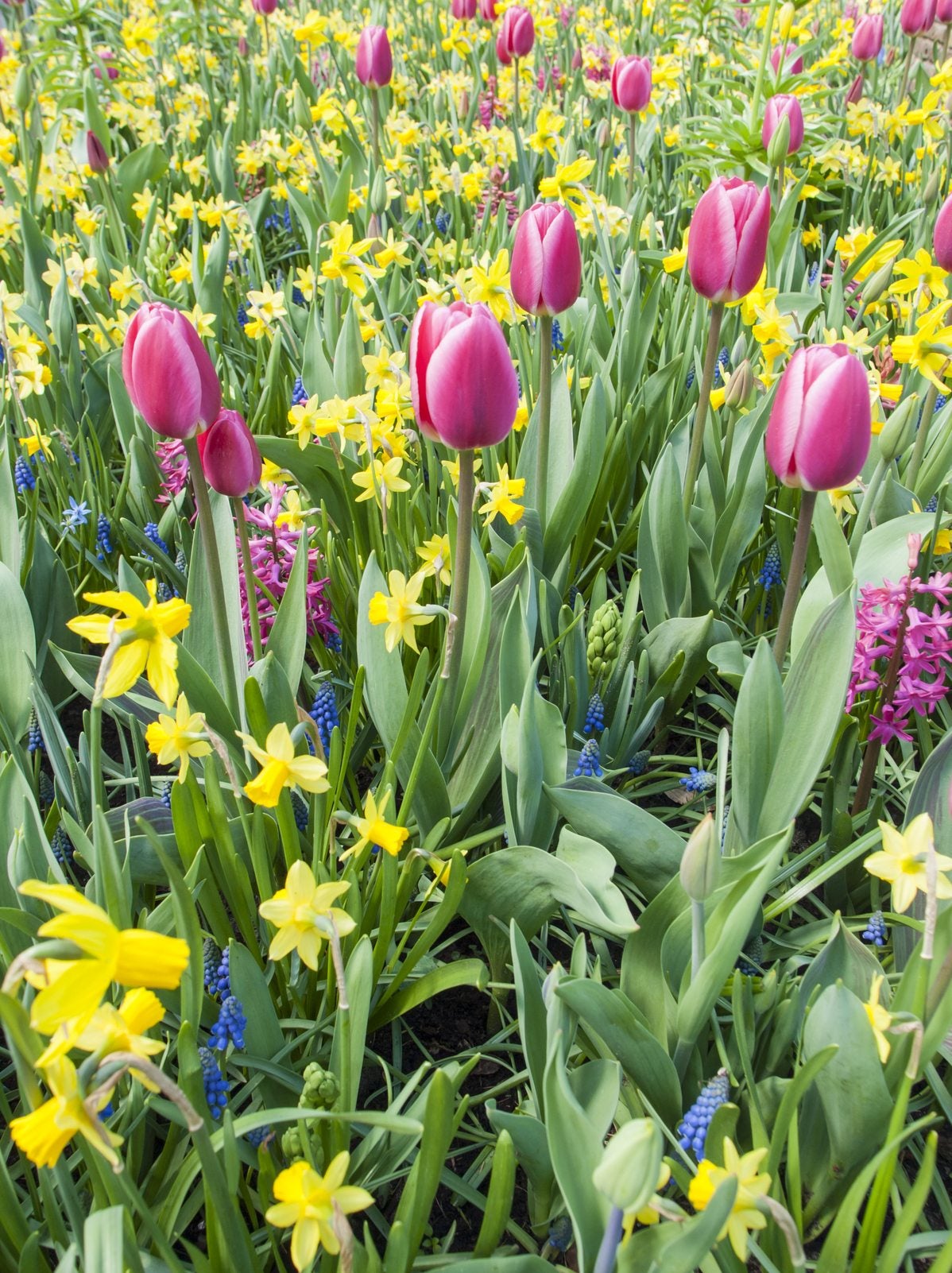Flower Bulbs For Zone 4: Tips On Planting Bulbs In Cold Climates


Preparation is the key to seasonal bulb color. Spring bulbs need to go into the ground in fall while summer bloomers should be installed by spring. Zone 4 flowering bulbs follow these same rules but must also be hardy enough to withstand winter temperatures of -30 to -20 degrees F. (-34 to -28 C.). These chilly temperatures can injure bulbs that are not tolerant of freezing. It is incumbent on the gardener to verify temperature requirements when planting bulbs in cold climates. Failure to check hardiness may result in fewer flowers and in some cases, completely wasted bulbs.
Fall Planted Flower Bulbs for Zone 4
There are a host of cold-hardy bulbs. Many spring-blooming varieties actually require a chilling period to break the dormancy of the embryonic plant inside the bulb. A word of caution… many of the fall-planted bulbs are not hardy when confronted with extremely deep freezes. Culture is also a factor when planting bulbs in cold climates. Preparing the soil and enhancing drainage and fertility can help ensure color displays from bulbs. Spring planted bulbs are a zone 4 gardener’s best friend because they are planted after danger of frost or planted in containers in a warm area for a jump start on growth. It is the fall-planted, summer bloomers that are of concern in cold climates. These are going to experience some extreme temperatures, rainfall, and ice. Proper depth and soil preparation can help keep these viable as can thick layers of organic mulch. Some of the most cold-hardy bulbs are:
- Allium
- Tulips
- Crocus
- Glory of the snow
- Daffodils
- Daylilies
- Fritillaria
- Hyacinth
- Siberian iris
- Bearded iris
- Snowdrops
- Siberian squill
Any of these flowering plants should withstand zone 4 winters with a little care.
Spring Planted Zone 4 Flowering Bulbs
Bulbs, corms, and tubers planted in spring will produce blooms in summer. This can be a challenge in regions with short growing seasons. In USDA zone 4, the best time to plant summer blooming plants is after the date of the last frost or, in general, April to June. This doesn't give some of the bigger producers much time to flower, so some species such as dahlias, Asiatic lilies, and gladiolus should be started indoors six weeks before planting outside. Even in cold zones, you can plant some of the glorious warm season bloomers with a little preplanning. Some bulbs to try might be:
- Star Gazer lily
- Summer hyacinth
- Saffron crocus
- Crocosmia
- Ranunculus
- Foxtail lily
- Freesia
- Pineapple lily
- Hardy cyclamen
- Summer Cheer daffodil
- Amaryllis
A note about hardy bulbs that bloom in summer. Many of these should still be lifted and stored over winter, as they may be affected by boggy, frozen soil and extended freezes. Simply store them in a cool, dry location and replant them when the soil is workable in early spring.
Cold Season Bulb Tips
Planting depth and soil preparation are some of the important steps to take to ensure the blooming of bulbs in cold regions. Zone 4 experiences a wide variety of winter weather and summers may be hot and short. Good soil conditions can help prevent rot and freeze damage while allowing good root formation and nutrient delivery. Always till your garden bed to a depth of at least 12 inches (31 cm.) and incorporate compost or gritty material to increase porosity and reduce soggy soil areas. Bulb depths differ by plant type. The rule of thumb is to plant at least two to three times as deep as the bulb is tall. Deeper planting gives plants a blanket of soil to help prevent freeze damage, but they can't be so deep that the young sprouts can't break through to the surface of the ground. Many garden centers and online catalogues list the exact planting depth, and the packaging should also indicate how many inches (or cm.) deep the bulb should be installed. Cover fall-planted bulbs with mulch and pull it away in early spring. Summer-blooming bulbs will also benefit from mulch but if you have a doubt about the plant's hardiness, it is easy enough to lift and store them for the next spring's planting.
Sign up for the Gardening Know How newsletter today and receive a free copy of our e-book "How to Grow Delicious Tomatoes".

Bonnie Grant is a professional landscaper with a Certification in Urban Gardening. She has been gardening and writing for 15 years. A former professional chef, she has a passion for edible landscaping.